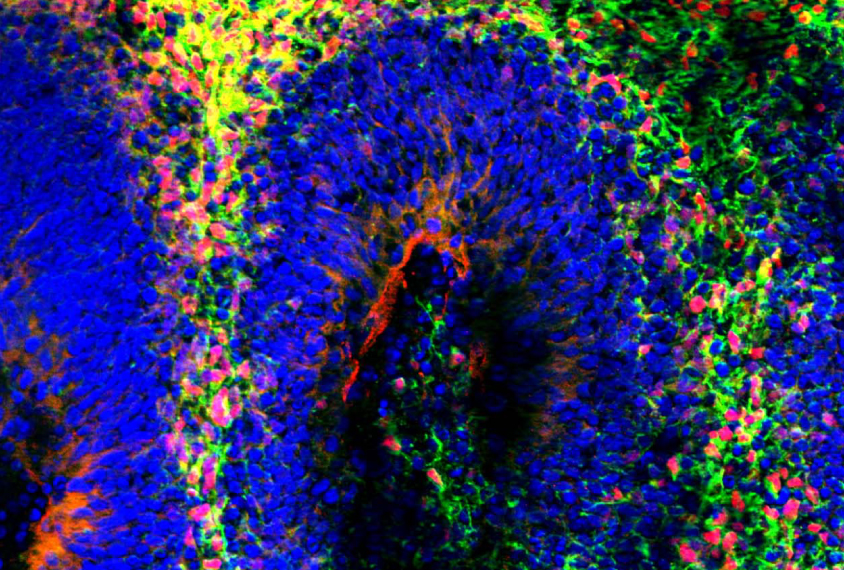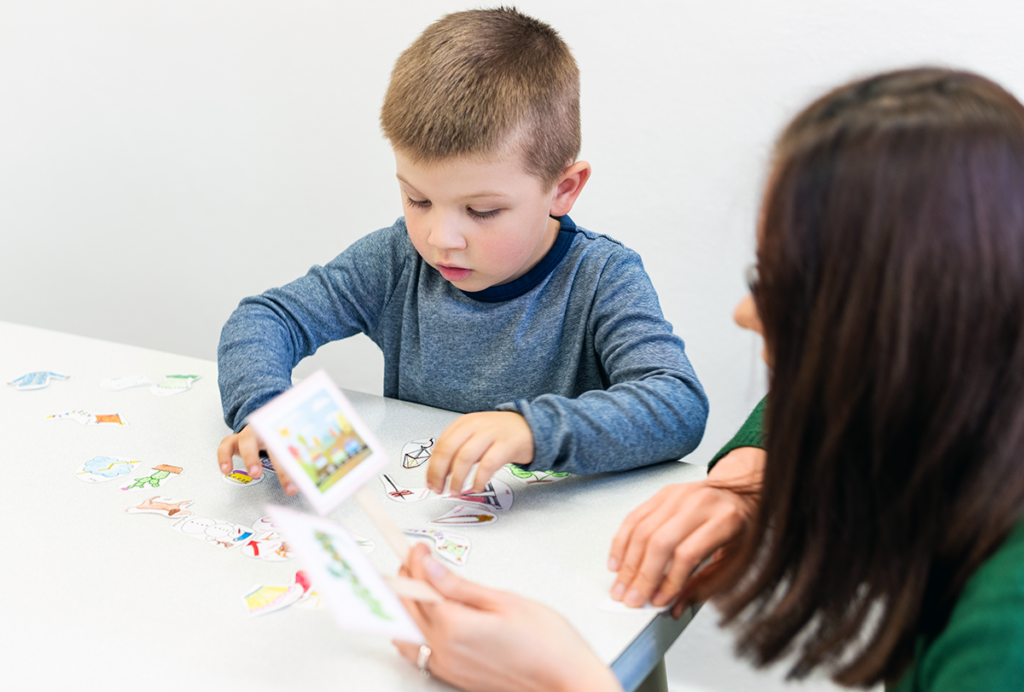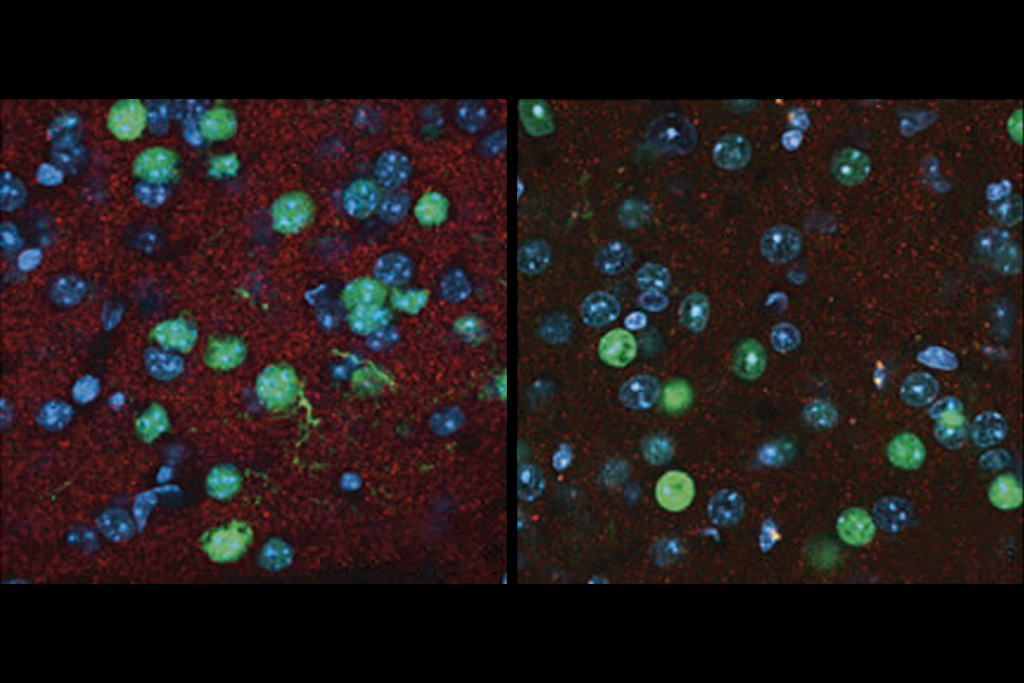
‘Mini-brains’ may mimic only early brain development
Gene expression in so-called ‘organoids’ resembles the pattern seen in the first few weeks of a developing brain.
Gene expression in so-called ‘organoids’ resembles the pattern seen in the first few weeks of a developing brain. This finding suggests that these mini-brains are too immature for studying autism genes, which are active in later periods of development.
Researchers presented the unpublished results Saturday at the 2016 Society for Neuroscience annual meeting in San Diego.
Organoids are balls of neurons made from reprogrammed skin cells. Under certain culture conditions, the neurons cluster into spheres, with different types of cells arranged in layers similar to those found in the human brain.
But it is unclear how well organoids mimic a developing brain, says Anahita Amiri, associate research scientist in Flora Vaccarino’s lab at Yale University, who presented the findings.
Amiri and her colleagues collected samples of both skin and brain tissue from each of five fetuses at 15 to 17 weeks old. The brain tissue came from two different regions of the developing cerebral cortex, the wrinkly outer layer of the brain.
Early bloomers:
The researchers reprogrammed the skin cells into induced pluripotent stem cells, which can become any cell type. They directed these stem cells to become neurons and coaxed them to form organoids. Scientists typically make organoids from adult skin cells, so Amiri and her colleagues first compared the organoids made from fetal cells with organoids made from adult cells.
They found that the two sets of organoids grow at similar rates and comprise the same cell types.
The researchers then examined gene expression patterns in the brain samples and in the fetus-derived organoids. They compared their findings with information from BrainSpan, a repository of gene expression data at various developmental stages.
The expression pattern seen in the organoids resembles that found in an 8- to 9-week-old fetus in BrainSpan. By comparison, gene activity in the fetal brain tissue samples corresponded to that of a 10- to 18-week-old fetus.
“Our organoids represent an earlier stage of brain development than the fetal brain tissue,” Amiri says.
The finding suggests that organoids are only useful for studying the first few weeks of brain development. Researchers may need to tweak their culture techniques for organoids that represent later stages of development.
For more reports from the 2016 Society for Neuroscience annual meeting, please click here.
Recommended reading
Home makeover helps rats better express themselves: Q&A with Raven Hickson and Peter Kind

Genetic profiles separate early, late autism diagnoses

SHANK3 deficiency and behavior in mice; and more
Explore more from The Transmitter

